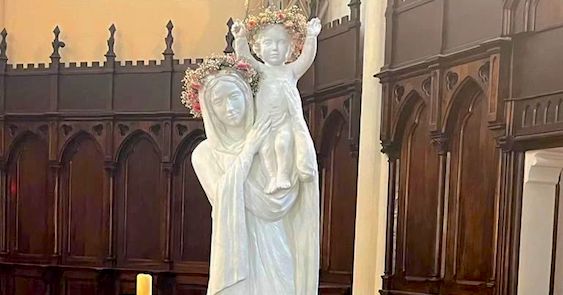
In the early centuries, the Desert Fathers, who voluntarily lived in a "linguistic desert", practiced a repetitive form of prayer. They strung pebbles on a cord to keep track of the pace and number of recitations of biblical passages.
Later, people fashioned "prayer ropes" for the recitation of the Lord's Prayer, hence the first known name of the rosary in the West: the "paternostre" (Latin for Our Father). For instance, in Cistercian monasteries, the lay brothers often recited the "Our Father" while the monk brothers chanted the psalms, and would tie knots on the rope they wore around their waist.
It was in the 12th century, during the great surge of Marian devotion generated by St. Bernard of Clairvaux, that the word "rosary" appeared. It designated the crown of flowers - "chapel" (Old French: small hat, thence the French name “chapelet” for the 5-decade rosary) - that was placed on the head of the statue of the Virgin Mary. To the "Our Father" were soon added the words of the Archangel Gabriel at the Annunciation, and this prayer took the name of "Psalter of Our Lady". The words of Elizabeth's greeting were added later.
Isabelle Rolland, Le Rosaire, présent du Ciel et chemin de sainteté (The Rosary, Gift from Heaven and Path to Holiness)